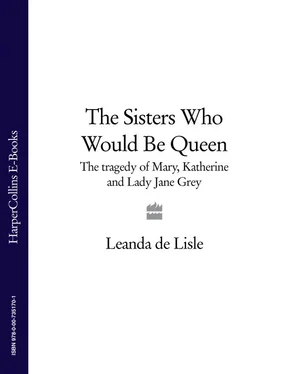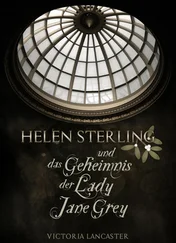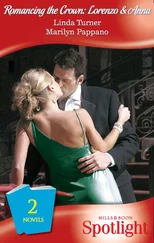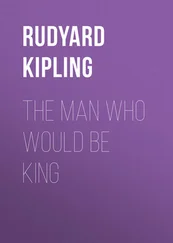According to the mid-sixteenth-century martyrologist John Foxe, however, the attempt to expose heresy in the Queen’s Privy Chamber was just a prelude to a direct attack on the Queen herself: and one in which Lady Jane Grey would, in the nineteenth century, be given a walk-on part. Foxe claimed that Bishop Stephen Gardiner, the new intellectual leader of religious conservatism, was desperate to get rid of Catherine Parr and end her influence with the King. He convinced Henry that her efforts to urge him to religious reform amounted to an attack on his place as head of the Church in England. Henry rose to the bait and, after a heated discussion with his wife on matters of religion, announced he wished to be rid of her, just as he had been rid of Anne Boleyn. Foxe described how articles for the Queen’s arrest were drawn up, but that as Henry’s temper cooled he allowed one of his doctors to warn Catherine she had stepped over the mark. Terrified, Catherine went to the King that night, ‘waited upon only by the Lady Herbert, her sister, and the Lady Jane [Grey] who carried the candle before her’. 18 In the King’s chamber Catherine worked hard to soothe her husband, submitting herself to his will in a speech that strongly resembles that made later by Shakespeare’s Kate in The Taming of the Shrew . When Henry accepted her assurances that she only wished to be his good wife, Catherine knew she was safe - or so we are told. ‘Lady Jane’ is a Victorian misreading of ‘Lady Lane’, and there is very little truth even in Foxe’s original story.
There were rumours in 1546 that Henry had already tired of Catherine, but, contrary to Foxe’s account his disillusion had nothing to do with the Queen’s reformist fervour. It was believed that he wanted to replace her with the alluring young Katherine Suffolk, who could have become a more formidable opponent to the conservatives than Parr. Foxe’s version of the events of 1546 placed Catherine Parr close to the ranks of the martyrs he admired, and perhaps also helped counterbalance the most difficult elements of Askew’s story for sixteenth-century readers: her disobeying her husband, her preaching, and her arguing with her male superiors. The martyrologists liked their female saints weak and tender, like good children, if also brave and steadfast. 19 Foxe’s picture of an unpredictable King and a court riven by deadly religious rivalries, however, is accurate enough, even if the details are not. And because we know something of what follows, the later image of Jane Grey on the cusp of the new reign remains a haunting one - a young girl walking into the darkness, carrying her candle before her.
Chapter III Jane’s Wardship
King Henry VIII’s death, at fifty-six, was announced on 31st January 1547. For over a fortnight afterwards, wherever Jane turned at court, she saw black. Thirty-three thousand yards of dark cloth and a further eight thousand yards of black cotton, shrouded the floors and ceilings of all the royal chapels, was hung throughout the royal apartments, over the royal barges, carriages and carts. But as soon as the King was interred in Jane Seymour’s tomb at Windsor, on Wednesday 16th February, the cloth was taken down, the rich unveiled tapestries and brilliantly painted walls heralding the reign of Edward VI, her cousin and contemporary.
That Sunday, the coronation began with the nine-year-old King processing before a cheering crowd from Whitehall to Westminster Abbey, the court following in line of precedence. Catholic ambassadors described Edward as ‘the prettiest child you ever saw’, and they had little reason to flatter him. A slight boy with corn gold hair and pink cheeks, he looked angelic - his father before the fall. Always anxious to please the adults around him, Edward managed not to stagger once under the weight of the heavy robes of red velvet and ermine. But the adults, concerned whether he could cope with the rigours of the day-long rituals, had taken care to shorten the ceremonies by several hours and arrangements had been made for rest periods. When he reached his throne on the dais in the church, Edward also found two extra cushions had been placed on it to give him extra height. His health and strength reflected the vitality of the new regime and it was important Edward not appear vulnerable.
Henry had appointed sixteen executors of his will, whom he had envisaged acting as co-rulers until Edward came of age, but these decrees had been buried even before he was. The executors had established themselves as the Privy Council on the same day as his death was announced, three days after Henry had drawn his last breath. The Council was traditionally a large administrative body (it had forty members by the end of Edward’s reign). At its core were the King’s advisers, currently the sixteen executors, who had promptly elected Edward’s elder uncle, the evangelical Edward Seymour as ‘Lord Protector of England’. A country so used to being governed by the will of one man was not ready for an oligarchy of sixteen. In line with his position, the Lord Protector had also been granted the title ‘Duke of Somerset’. The ambassadors were now invited to the coronation to witness the revolutionary political and religious programme the Protector, and his allies, intended.
Since 1375 the so-called Liber Regalis had laid down how Kings of England were to be crowned, and it dictated the format of the ceremonies ahead. But for Edward’s coronation several significant modifications were made. The first became apparent as the Archbishop of Canterbury, Thomas Cranmer, presented Edward to the three estates - the Lords, Commons and bishops - in the congregation beneath him. Instead of asking their assent to his crowning, Cranmer demanded they swear their service to Edward. The significance of this became apparent in the coronation oath, which the archbishop had also rewritten. The ancient promise to preserve the liberties and privileges of the clergy was struck out, and Edward, instead of agreeing to accept laws presented by his people, swore that the people were to accept his laws: in reality the Council’s laws presented under his authority. Henry VIII had regarded his claimed ‘royal supremacy’ over religious affairs his greatest achievement. The arguments used in its support placed him above not only the Pope’s laws, but England’s also. He was the superior legislator who ‘gave’ the law and exercised his ‘ imperium ’, or ‘command’, over Church and state. 1 But this authority was now in the hands of politicians and prelates he had assumed were his lapdogs. Their power, through the boy King, was absolute and would be wielded for a specific purpose. Cranmer’s sermon explained that Edward was to be a new Josiah, the biblical king and destroyer of idols. It was a Year Zero in which a new religious ideology was to be imposed on his people and England’s Catholic past rooted out of his subjects’ hearts and churches.
At the conclusion of the rituals, Jane’s father, Dorset, and her young uncle, the eleven-year-old Henry, Duke of Suffolk, stepped forward. Together they helped Edward hold his sceptre and ‘the ball of gold with the cross’ and presented him to the congregation as their King. 2 Propped up like a living doll he represented more than anyone else the central place children now held in the brutal world of adult politics. But Jane, along with her teenage cousin the Princess Elizabeth, would soon join Edward as the tools of ambitious men.
The future for Lady Jane Grey and her sisters was to be dominated by one document: King Henry’s will. Parliament had given Henry the right to bequeath the crown by testament and when he had called for it, on 26th December 1546, he was prepared to use that power. Lying sprawled on the vast state bed at Whitehall, with its gilded frame and rich hangings, the ailing monarch had worked at his revisions for four days. The period between Christmas Day and New Year is a strange hiatus, a time caught between the past and the future, appropriate, perhaps, for the birth of such a document. The seasonal celebrations did not disturb him, but Henry’s councillors and confidants had buzzed around him like flies until, on the 30th, he approved the final changes.
Читать дальше












